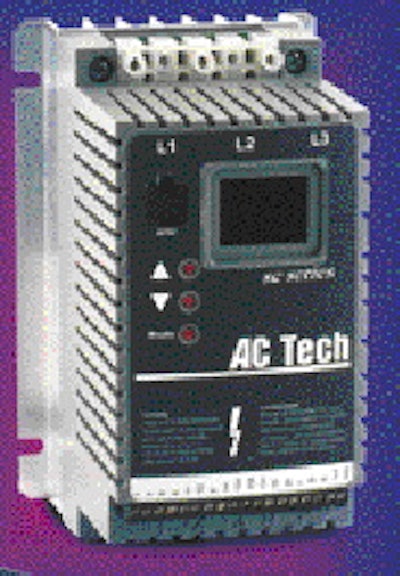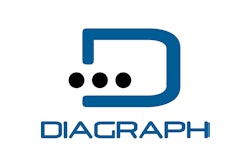Packaging, it seems, is one area that's been relatively spared by the Y2K bug. At least that's the rough consensus of several manufacturers PW spoke with this summer for this special Packaging Y2K report. Still, most manufacturers admitted finding at least a few problems on their packaging lines. And for plants that tend to be more automated, the integration of different control systems represents an extra vulnerability to potential Y2K problems.
The Y2K bug, for anyone who hasn't been on planet Earth for the past year, is actually a design flaw in hardware or software that can potentially cause a machine to work improperly, or not at all, come Jan. 1, 2000. In the case of packaging lines, the hardware can be any type of controller--PC, PLC, drive or motion controller. The software can be the operating system or application software--even software that's stored on programmable read-only memory chips (PROM), referred to as "firmware." All of this hardware and software needs to be checked, even though most components are Y2K-compliant, packagers report.
"Most of the guts of packaging machinery, whether it's controlled by a PLC or motion controller, is not going to have too much of a problem," says Wade Latz, manager of packaging systems engineering at Hershey Chocolate North America, Hershey, PA. "If you have a PC-based operator interface, or if you're doing any reporting that uses a date/time stamp, it could be a little bit of a nuisance, but it isn't going to have a catastrophic effect."
An engineer with systems integrator Frucon (Ballwin, MO) confirms that the impact on packaging has been light. "We've been doing some Y2K remediation on a few packaging lines," says Frucon's Tony Zamberlan. "Essentially we haven't had to change hardware at the PLC level. It's just recoding [the ladder logic programming] to make it technically Y2K-compliant. On a couple systems we did have to upgrade the human-machine interface [HMI]."
And it's not just Y2K. Don't forget about 9/9/99, which some programmers reportedly used as a code to stop the machine. "That's another one that has reared its ugly head," says David McKay, director of facilities and support services at Torpharm, a Toronto-based pharmaceuticals company. "Our IS group is looking at that one right now."
And, the leap year: 2/29/2000. Most packagers we spoke to were already aware of these key dates and didn't report any problems associated with them.
Paperwork flies
One of the rich ironies of the Y2K bug is the blizzard of paperwork that it's causing--exactly what computer automation was designed to prevent.
"We're inundated [with request forms for Y2K compliance] from every customer we have," says Joe Kimbrell, electrical engineering manager at Rovema (Lawrenceville, GA).
"I would say that in the last year, there's been probably close to 3ꯠ of these letters and questionnaires that have crossed my desk," says Phil Metzler, senior director of marketing at Diagraph (St. Louis, MO).
The paperwork actually arises out of a complete investigation process that most packagers find themselves going through: make a list of every controller, component and machine that might have a microprocessor; contact the manufacturers and request a certificate of compliance; forward the date to 1/1/2000 and test each component; perform any necessary upgrades; and test again.
One communications resource that most suppliers are trying to direct their customers to is their company Web site, on which many display Y2K information on their products. While the depth of information posted on-line can vary, it is often quite detailed.
Still, even armed with Y2K-compliance guarantees, most packagers are testing anyway, just to be safe. "We even tested stuff that didn't have dates as part of code, just to see what would happen," says George Haak, facilities/packaging engineer at a Zeneca Pharmaceuticals plant in Newark, DE.
Part of the testing process consists of looking through the programming of a controller such as a PLC to search for date-related functions. Software provided by the PLC manufacturer can be used to ferret out date references within the ladder logic.
"It's much less error-prone," says Steve Mitchell, director of global operations engineering at Amway, Ada, MI. "Because
if you have somebody looking through a [long] program, pretty soon all you see is lines of code. With fatigue-free software doing the research, you can pretty much guarantee you've found everything."
Testing protocols
Some machinery builders have also made comprehensive testing protocols available to their customers. Klockner Packaging Machinery (Sarasota, FL), for example, offers rigorous testing software to its customers for checking the controls on all its packaging equipment for Y2K-compliance.
Since Y2K remediation can be so time-consuming, some packagers have resorted to outside help. "We've brought in outside consultants to selectively audit some of our plants," says Jim LaSachierre, project manager for the operations support group at Pennzoil Products Co., Houston, TX. "They've found some microprocessors [that were initially overlooked] in our cap level-detection equipment, cartoning and sealing equipment." No Y2K bugs were found in this equipment, however.
Ocean Spray Cranberries, Inc., Lakeville-Middleboro, MA, hired Tava Technologies (Englewood, CO), a large systems integration firm with custom-developed software for inventorying machines with potential Y2K problems and remediation management for large manufacturers with multiple plants. "Plus we're bringing their engineers into our plants to assist us because we don't have the resource time to go out and do the grunt work," says Gordon Brailsford, Ocean Spray engineering manager.
Where the problems are
Several packagers mentioned that their ink-jet coding equipment wasn't Y2K-compliant; fortunately, solving this problem typically involves just a software or firmware upgrade, which is usually free.
"[Y2K] typically affects the tail end of the lines where we do date coding," says Amway's Steve Mitchell. "We're using ink-jet coders, so we've had to update all of our programs there to make sure they roll over properly to the year 2000."
Ink-jet coder manufacturers such as Diagraph have tried to meet the challenge by posting up-to-date Y2K-compliance information on its Web site. "On much of our equipment, there are three aspects to address," points out Diagraph's Phil Metzler. "There's the firmware, which might be inside a thermal-transfer printer or in the controller of an ink-jet system. Some are stand-alone systems, and many are driven by PCs. Then you need to check the compliance of the software. Finally, you need to check the compliance of the PC that you're running."
The PC: check everything
PCs present a unique challenge to packagers. First, they are more ubiquitous than many might suspect. For example, many touchscreen operator interfaces are actually PCs. Some ink-jet coders are controlled by PCs. Some inspection equipment, especially machine vision systems, are PC-controlled. Also, PCs might be embedded inside the control cabinet of packaging machinery, either in the form of a machine or motion controllers. They may look like a black box, or they may be in the form of a circuit board. "We use PCs all over the place--on our HMIs, our quality stations, our visions systems and so forth," says Ocean Spray's Brailsford.
The second issue with PCs is that they are vulnerable to the Y2K bug on several levels. First, a chip on the circuit board, often referred to as the BIOS or Basic Input/Output System, should be checked for compliance. The BIOS contains the basic start-up and operating instructions for the computer. BIOS upgrades typically involve swapping out chips on the motherboard. Some users, like Ocean Spray, take a more dramatic approach. "We typically just replace the whole PC," says Brailsford.
Next, the operating system running on that PC must be checked. Some PCs may run a version of Microsoft Windows(TM); others run proprietary operating systems. Experts advise not to assume any operating system, even one from Microsoft, is compliant.
Then the application software should be checked. For example, on an operator interface, the human-machine interface software that creates the on-screen graphics such as buttons and meters, should be tested.
Data acquisition/integration
Where Y2K begins to be more of a threat is in the automated packaging lines that use human-machine interface software, packaging line networks and sophisticated Supervisory Control & Data Acquisition (SCADA) systems. While Y2K problems in these areas can be harder to detect and/or remedy, most manufacturers were careful to put the problem in the proper perspective.
"If the date is wrong in our acquisition system, it's probably not significant in the great scheme of things because the filler still fills," says Amway's Steve Mitchell. "But in terms of record-keeping, making sure our systems are solid, yes, it's important."
After all the upgrades are done, there can be another problem: "Then you've got to worry about compatibility," says Ocean Spray's Brailsford. "You may have the latest version of your SCADA software that's Y2K-compliant, but you may find that if you upgrade to Microsoft Service Pack Four [operating system update], it hasn't been fully sanctioned yet by the SCADA vendor. Then on top of your SCADA/HMI software, you've got your custom code, which consists of the actual screens that you've developed for the packaging line."
Y2K-compliant integration?
Whenever there's date information being passed back and forth between different components on the packaging line network, there's a potential for problems.
"Most of the failures that are going to happen aren't going to be an individual machine or control, but how that control communicates with another piece of equipment," says Maigh Winder, Y2K guru at Siemens Energy & Automation (Alpharetta, GA).
Agrees Brailsford at Ocean Spray: "The real test is when you actually roll the dates forward on the entire system and check the integrations. We're actually using a General Motors test standard as our basis. There are more than 20 date tests that you go through on the packaging line."
Still, most packagers agreed with this assessment from Pennzoil's LeSachierre: "We haven't yet found anything that we consider to be critical or that would cause catastrophic failure in any part of the packaging operation."
The irony here is that the less automated a packaging plant is, the less likely it is to be affected by Y2K problems.
Beyond the packaging line
Several packagers PW spoke with reported full cooperation with their vendors. Typical was the comment of Amway's Mitchell: "Everybody seems to be in tune with what the issue is."
With Y2K largely under control in packaging, many engineers are now turning to something else that could wreak havoc on their packaging lines:
"Now we're worrying about external things," says Zeneca's Haak, "because we really have no control if the electricity goes out, water shuts off or UPS can't deliver."
Ocean Spray's Brailsford agrees: "Contingency planning is next on our radar scope, both from a corporate perspective--what if you lose a plant for a week, or month--and at the local level, making sure the building is protected, assets are protected and our inventory is protected," he says.
"I'm likening it to a major snowstorm," Brailsford concludes. "Some areas are going to get pelted harder than others."


























